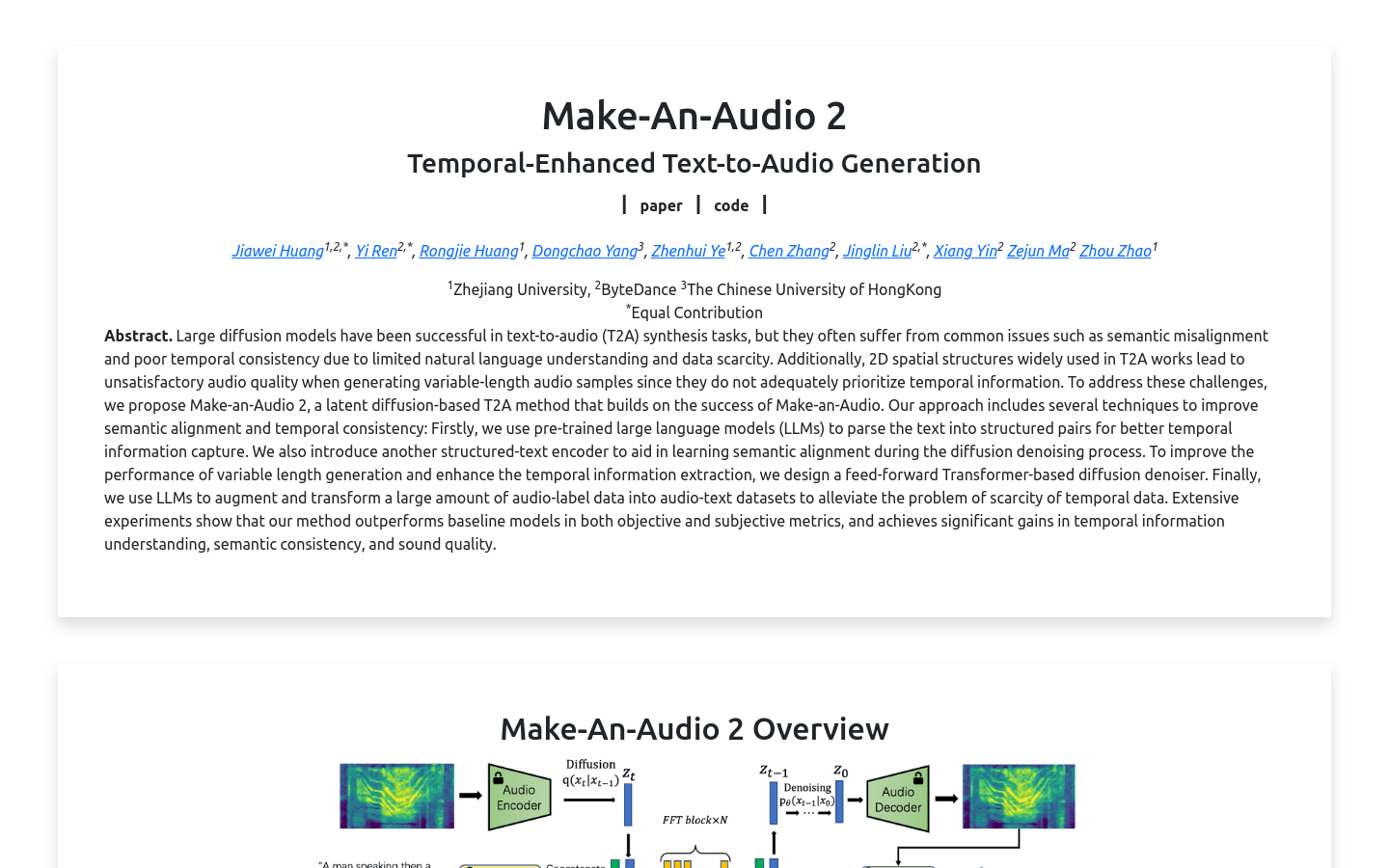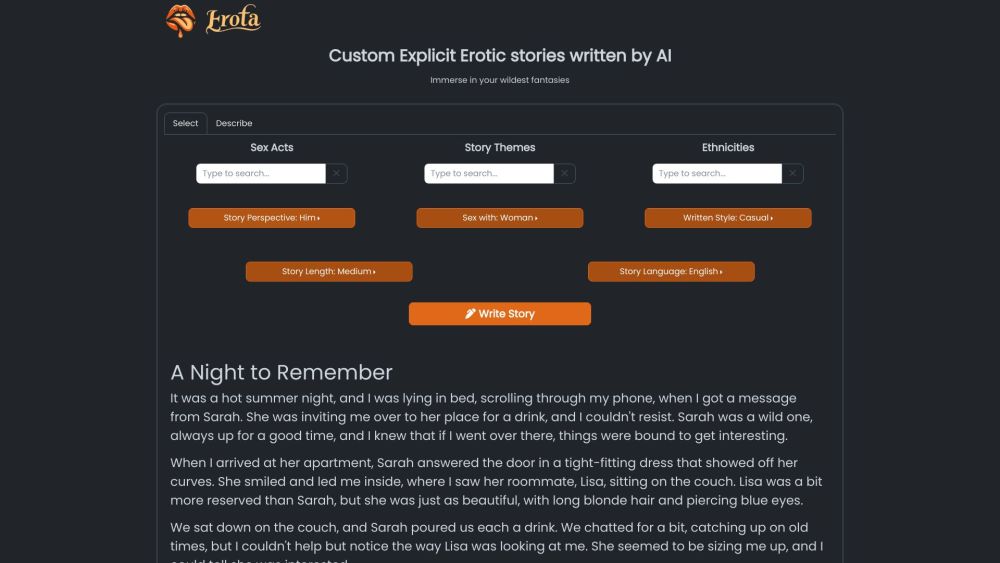
What is Make-An-Audio 2 ?
Make-An-Audio 2 is an Advanced Text-TO-Audio Generation Technology Developed by Researches from Zhejiang University, Byte Betting and the Chinese University of Hong Kong. It optimizes time information capture by using pre -training large -scale language models to generate high -quality audio. This technology introduces a structured text encoder to help the semantic alignment in the process of spreading the noise, and designed a diffuser noise device based on the feeding transformer to improve the performance of long audio generation.
Make-An-Audio 2 's target audience includes researchers and developers in the field of audio synthesis, as well as application scenarios that require high-quality text to audio conversion, such as automatic dubbing and audio-visual production. It can generate high -quality audio that is uniform and time -consuming with text content to meet the needs of these users.
Examples of using scenes include the background sound and dialogue that automatically generates audiobooks, automatically add narration and sound effects to video content, and the sound of creating virtual characters for games or animations.
Product features include:
Use pre -trained large language models to analyze text to optimize time information capture.
Introduce a structured text encoder to assist the learning of semantic alignment during the spread of noise.
The design is based on the diffuser noise device feedback Transformer to improve long audio production performance.
Use large language models to enhance and transform audio label data to relieve the scarcity of time data.
Beyond the baseline model on objective and subjective indicators, significantly improve time information understanding, semantic consistency, and sound quality.
Use tutorial:
1. Prepare natural language text as input.
2. Use the Text Encoder of Make-An-Audio 2 to analyze the text.
3. Structural text encoder assisted the semantic semantics.
4. Use the diffuser noise to generate audio.
5. Adjust the length and time control of generating audio.
6. Modify the structured input as needed to control the time.
7. Generate the final audio output.







